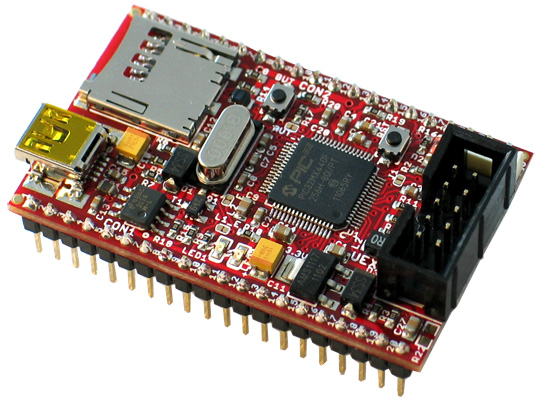PIC32-PINGUINO-MICRO
This Maple-like board features a Microchip PIC32MX440F256H 80 Mhz microcontroller and a 16-channel 10bit ADC (only 11 channels are available on this board). It can sample at 1MSPS and can perform conversions in sleep and idle modes. The price is very reasonable too at 12.95 EUR (<$18USD). The UEXT connector allows you to add Olimex modules for a wide variety of peripherals and interfaces. Modules are available for interface, adapters, sensors, LCD, IO, video, RF. RFID, Ethernet, time, GPS, MP3 and Biofeedback.
ADI part number EVAL-ADXL345Z-DB ($59.00) This datalogger isn't as powerful with only a 40+MHz ARM7-based ADuC7024 MCU, but has a lot of features. The MCU itself has a multichannel, 12bit, 1 MSPS ADC, voltage reference, temperature sensor, voltage comparator, up to 4 DACs, power supply monitor, PLA and 3-phase 16bit PWM generator. The board can be powered by two AAA batteries, and includes a 3-axis accelerometer, the ADXL345. The development environment for the sample code requires a evaluation version of the compiler, but there are GNU tools available for the processor.


